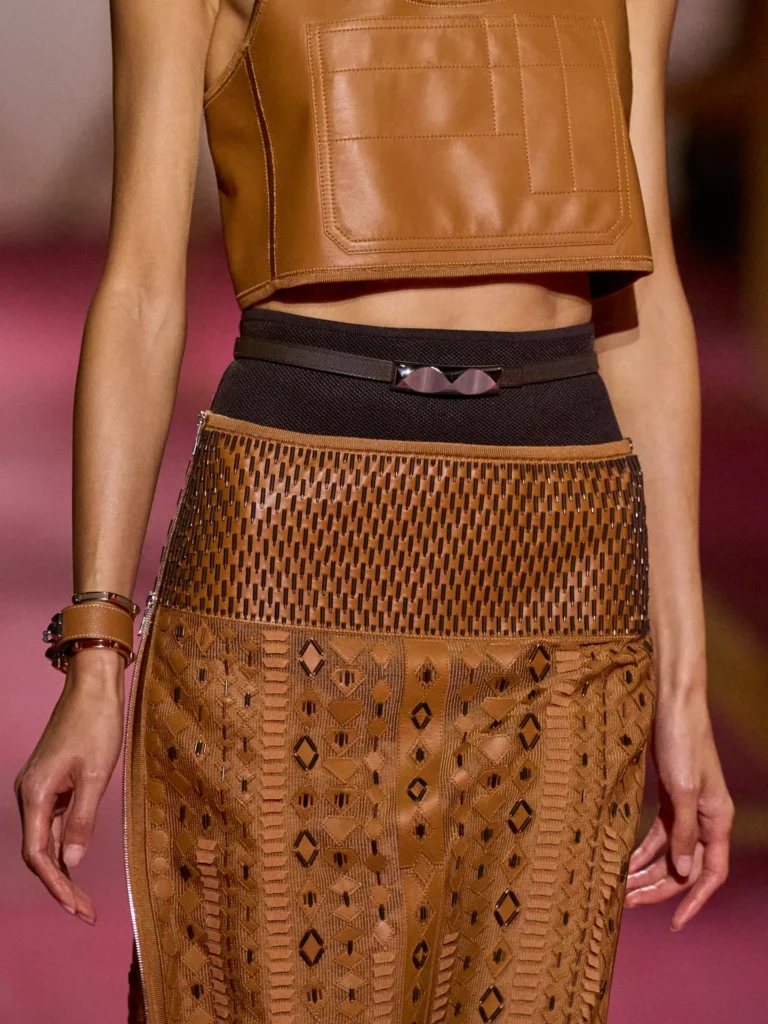
Disclosure: The Italian Reviews is an independent publication. We may earn a commission from purchases made through links on our site at no extra costs for you, which helps us continue to provide insightful luxury content..
The Enduring Allure of Hermès: A Legacy Forged in Craftsmanship and Undeniable Desire
Where Artistry Meets Innovation Across Generations, Shaping the Fabric of Ultimate Luxury
by Michael Lamonaca 27 June 2025
In the realm of high luxury, few names evoke the same reverence and profound admiration as Hermès. More than a brand, it is a living narrative of unparalleled artistry, a testament to dedication that spans nearly two centuries. It’s a heritage meticulously passed down, each generation contributing to an identity that transcends mere commerce, becoming a purveyor of objects that are not just owned, but cherished, admired, and aspired to.
A Legacy Woven Through Time: From Bridles to Icon Status
The journey of Hermès began in 1837, when Thierry Hermès, a master saddler, opened his workshop in Paris, specializing in the finest bridles and harnesses for the European nobility. His commitment to exquisite craftsmanship and impeccable quality quickly earned him a distinguished clientele, laying the foundational stone for what would become a global empire of luxury.
The reins of the family business were gracefully passed through the generations. In 1880, Thierry’s son, Charles-Émile Hermès, moved the workshop to its iconic 24 Rue du Faubourg Saint-Honoré address, introducing saddlery and expanding into travel goods. It was under his leadership that the brand began its subtle shift from equestrian equipment to personal leather accessories.
The early 20th century saw the ascension of Charles-Émile’s sons, Adolphe and Émile-Maurice Hermès. Émile-Maurice, a visionary, recognized the changing times and introduced revolutionary innovations, securing exclusive rights to the zipper in France and incorporating it into Hermès leather goods. He also foresaw the decline of horse-drawn carriages and expertly pivoted the maison towards handbags and clothing, ensuring its enduring relevance.
The post-war era brought new creative energy with Robert Dumas, Émile-Maurice’s son-in-law, at the helm. He masterminded some of Hermès’s legendary designs, including the “Kelly Bag” (named after Grace Kelly) and the iconic silk scarf. Later, Jean-Louis Dumas, Robert’s son, expanded the brand’s global footprint and fostered an environment where new classics, such as the “Birkin Bag,” were conceived, further cementing Hermès’s place in the pantheon of ultimate luxury. Today, the family legacy continues with Pierre-Alexis Dumas as the artistic director, while figures like Nadège Vanhee-Cybulski (Women’s Ready-to-Wear) and Véronique Nichanian (Men’s Universe) continue to sculpt the brand’s contemporary aesthetic, ensuring its enduring desirability through modern expressions rooted in timeless savoir-faire.

The Material Story: A Symphony of Sensation and Durability
The soul of every Hermès creation lies in its materials. The selection process is a meticulous endeavor, bordering on obsession, ensuring only the most exceptional leathers, silks, cashmeres, and precious metals are used.
Leather, the very foundation of Hermès, is not merely a raw material; it is a living canvas. Sourced from the finest tanneries globally, each hide undergoes a rigorous selection process, ensuring flawless texture, consistent color absorption, and remarkable durability. The diversity is astounding – from the subtle grain of Togo and the structured elegance of Epsom to the velvety softness of Swift and the refined sheen of Box Calf. Each type offers a distinct tactile and visual experience, chosen not just for beauty, but for how it ages, acquiring a unique patina over decades, telling the story of its journey with its owner. The tanning processes, often taking months, are closely guarded secrets, resulting in colors of unparalleled depth and richness.
Beyond leather, Hermès’s silks are a world unto themselves. The famed carrés (scarves) are crafted from the highest quality mulberry silk, hand-printed with up to 40 different screens to achieve vibrant, nuanced designs. The silk itself is remarkably soft yet resilient, known for its ability to drape beautifully and retain its vibrant hues for generations. Similarly, their cashmere and other fine textiles are chosen for their supreme softness, lightweight warmth, and exceptional longevity, providing an indulgent comfort that speaks volumes of understated luxury.
In watchmaking and jewelry, Hermès employs precious metals (gold, platinum) and meticulously selected gemstones, always prioritizing intrinsic quality and the integrity of the design. The metalwork is often delicate yet robust, allowing the inherent beauty of the materials to shine through, complementing the narrative of the piece rather than overpowering it.

The Art of the Hand: Where Perfection is Personal
What truly distinguishes Hermès is the unwavering commitment to hand-craftsmanship. In an age of mass production, Hermès remains a bastion of artisanal excellence. A single craftsperson, not an assembly line, is responsible for an entire product, from cutting the leather to the final stitch. This singular dedication imbues each item with a unique character, a silent dialogue between the artisan and the material. The iconic saddle stitch, a technique borrowed from equestrian saddlery, exemplifies this: two needles pass through the same hole, creating an incredibly strong and durable seam that cannot unravel, a subtle mark of unparalleled quality and enduring value.
This methodical, almost reverent approach to creation results in objects that possess a tangible soul, a quiet perfection that is deeply personal. Owning an Hermès piece is not about fleeting trends; it’s about investing in an heirloom, a piece of art that gains character and beauty with time, reflecting a journey shared.
Why This Matters: The Legacy of Desire
The pursuit of Hermès is often a journey of anticipation and discovery. Its limited production, the careful control over distribution, and the sheer dedication to manual craftsmanship contribute to an aura of exclusivity and a heightened sense of desire. This isn’t scarcity for the sake of it, but a natural consequence of prioritizing uncompromising quality and the human touch over volume.
This philosophy transforms Hermès products into more than accessories; they become emblems of refined taste, objects that convey a deep appreciation for artistry, patience, and the profound beauty that emerges from dedication. They are pieces that carry a whisper of history and the promise of a future heirloom, making them not just purchases, but profound acquisitions.
Tips for the Discerning Collector/Investor
For those drawn to the deep allure of Hermès, consider your acquisitions not just for their immediate appeal, but for their enduring value and the rich experience they offer. Beyond the iconic pieces, explore the lesser-known collections that also embody the brand’s impeccable standards and unique design philosophy. Engage with the brand’s narrative, understanding the provenance of the materials and the stories behind the artisans.
When acquiring these coveted pieces, whether new or through trusted pre-owned avenues, authenticity and provenance are paramount. Seek out reputable retailers and be mindful of the subtle details that speak to genuine craftsmanship. Your journey with Hermès is one that celebrates not just the possession of beautiful objects, but the timeless human connection to art, heritage, and uncompromising quality.
#Hermes #LuxuryFashion #HauteCouture #Craftsmanship #TimelessStyle #LuxuryGoods #DesignerLife #HighEndFashion #TheItalianReviews #HermesLover #ArtisanMade #InvestmentPiece #LuxuryLifestyle